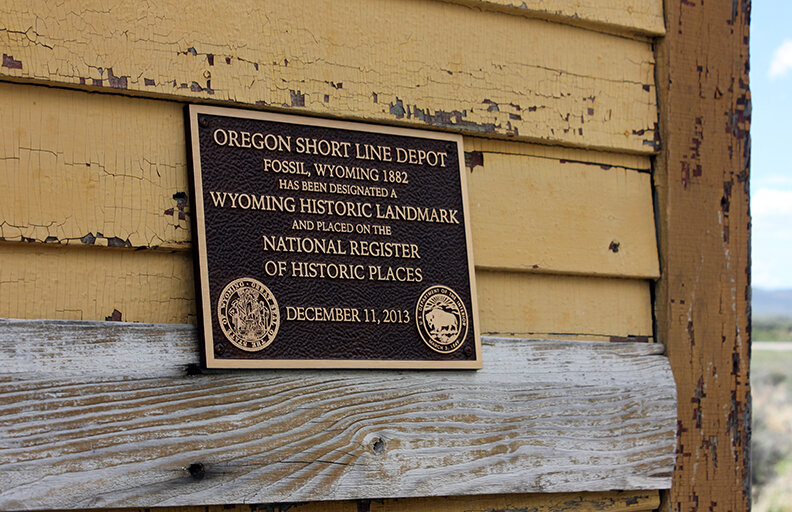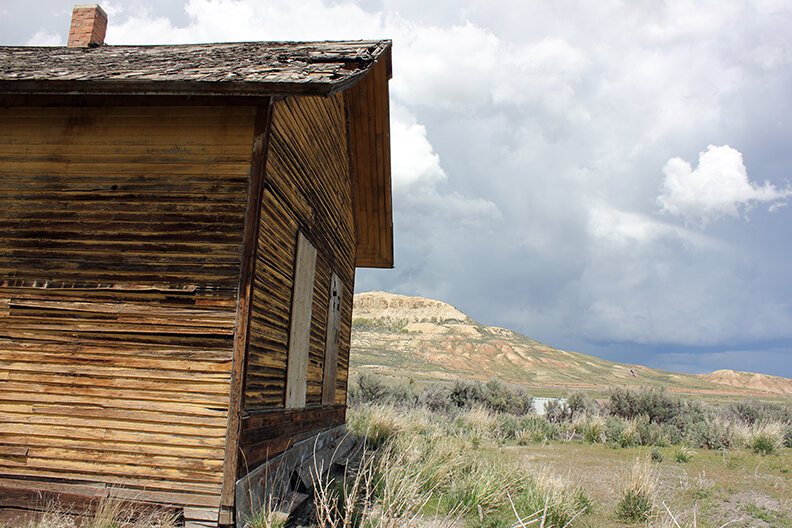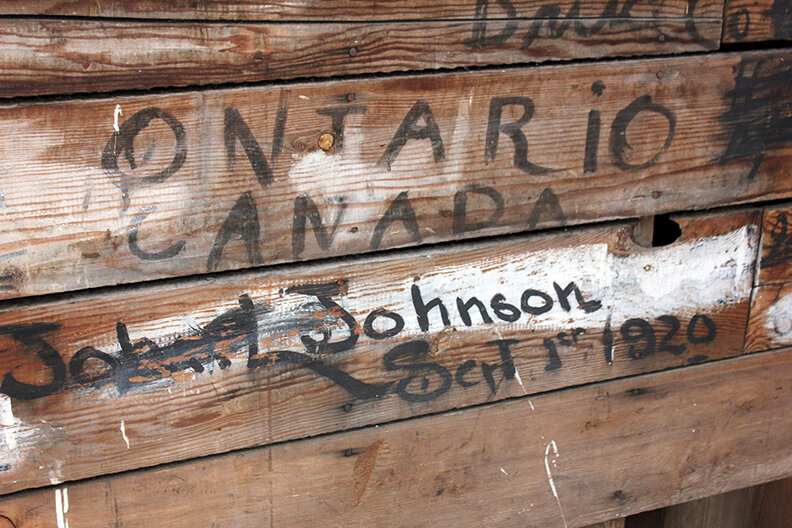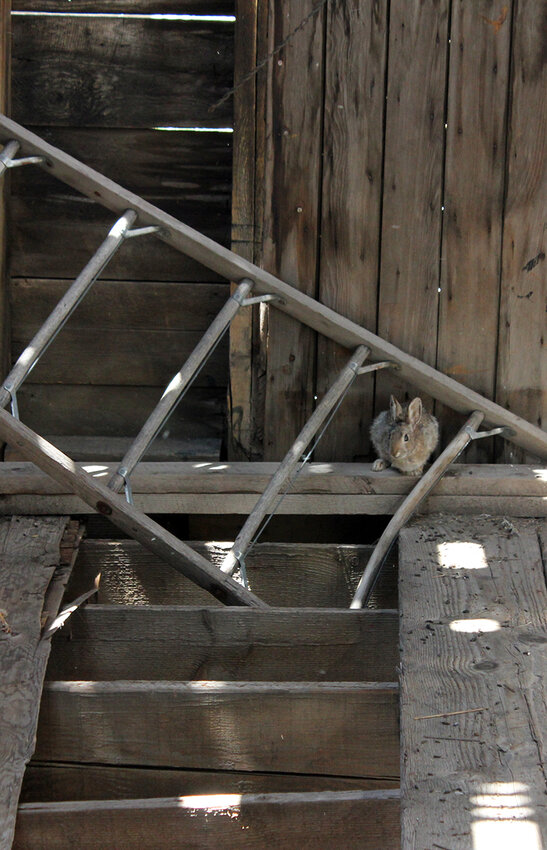“The immediate plan is to get grants to restore the roof, siding and foundation, so that we can prevent any further damage,” Aase said. “We hope we can get at least the roof done before winter, so that’s why we need and want locals to be involved.”
This item is available in full to subscribers.
To continue reading, you will need to either log in to your subscriber account, or purchase a new subscription.
If you are a current print subscriber, you can set up a free website account and connect your subscription to it by clicking here.
If you are a digital subscriber with an active, online-only subscription then you already have an account here. Just reset your password if you've not yet logged in to your account on this new site.
Otherwise, click here to view your options for subscribing.
Please log in to continue |
The Fossil Basin Institute is in the process of restoring the Oregon Short Line Railroad Depot just outside of Kemmerer. (GAZETTE PHOTO / Theresa Davis)
The Fossil Oregon Short Line Depot, a piece of local history that was built in the 1880s, is set to be renovated to its former glory. The railroad depot was part of the old Wyoming town of Fossil, near what is now Fossil Butte National Monument. The town’s post office closed in the 1940s, and in 1966 the highway was built straight through what was once Fossil.
The depot was officially designated on the National Register of Historic Places in December of 2013, with the help of the Fossil Basin Institute, which was established in May 2010 for the purpose of saving and restoring the Fossil Railroad Depot.

The Fossil Railroad Depot was listed on the National Register of Historic Places in 2013. The Fossil Basin Institute is looking for local members to help secure funding for the depot renovations. (GAZETTE PHOTO / Theresa Davis)
Arvid Aase is the curator at Fossil Butte National Monument and has been assisting the Institute with this project.
“I don’t think many people know there was actually a town here, or that it was anything special,” Aase said. “They just drive by and think it’s a few old buildings.
The Fossil Basin Institute will host a meeting on Thursday, May 31, to explain more about this renovation mission and to recruit local members. The meeting will be at 6:00 p.m. in the basement community room of the Kemmerer Library.
“This is a really unique piece of history, and here’s a chance for people to get involved and help save it,” Aase said.
Aase said after the railroad depot is restored, it will be used as a field center for natural history research in the Fossil Basin.
“It will be neat to see this historic building being used by modern scientists,” Aase said.
Aase said this project has been in the works for a while. The 1.6 acres of land that houses the original train depot and outhouses belonged to Roland and Betty Lewis, long-time Fossil residents who recently deeded the property over to the Fossil Basin Institute.

Fossil Railroad Depot with Fossil Butte in the background. (GAZETTE PHOTO / Theresa Davis)
The town of Fossil was actually moved once, and so the train depot moved along with it. In 1902, after the move, an addition created more space at the depot, and it has been in its current location ever since. The railroad depot officially stopped service in 1956.
Aase said the plan to restore the railroad depot is no small task, as it has endured decades of harsh weather and non-use. The roof is halfway gone, as are the wooden floorboards.
“The immediate plan is to get grants to restore the roof, siding and foundation, so that we can prevent any further damage,” Aase said. “We hope we can get at least the roof done before winter, so that’s why we need and want locals to be involved.”

GAZETTE PHOTO / Theresa Davis

The depot's roof and floor are in need of repair and restoration, but this bunny doesn't seem to mind. (GAZETTE PHOTO / Theresa Davis)
The old building is a time capsule for the history of the area. Aase said a Fossil Basin Institute member found the original 1880s train station logs underneath the floor.
One of the chimneys was struck by lightning in the 1980s, but the original bricks are still on the property. Visitors can even see what was once the railroad bed, along with the peeling layers of red and yellow Union Pacific paint on the depot.
“This style of train depot is less common,” Aase said. “And this depot is special because the inscriptions on the wall are one of a kind. No other building has these particular ones.”
A few of the inscriptions Aase mentioned date back to the late 1880s. Some train passengers signed their names and hometowns, along with the date.
Other inscriptions are just dates or doodles, but most are in great shape considering their age.

Inscriptions on the walls of the Fossil Railroad Depot date back to the late 1800s. (GAZETTE PHOTO / Theresa Davis)
Aase said the restoration project would focus on the historic integrity of the building, even though the building has seen better days.
“It’s like with the wooden shingles on the roof, which is going to be a very long process in order to use the same kinds of shingles,” Aase said. “A long process, but I think it’s worth it to preserve this.”